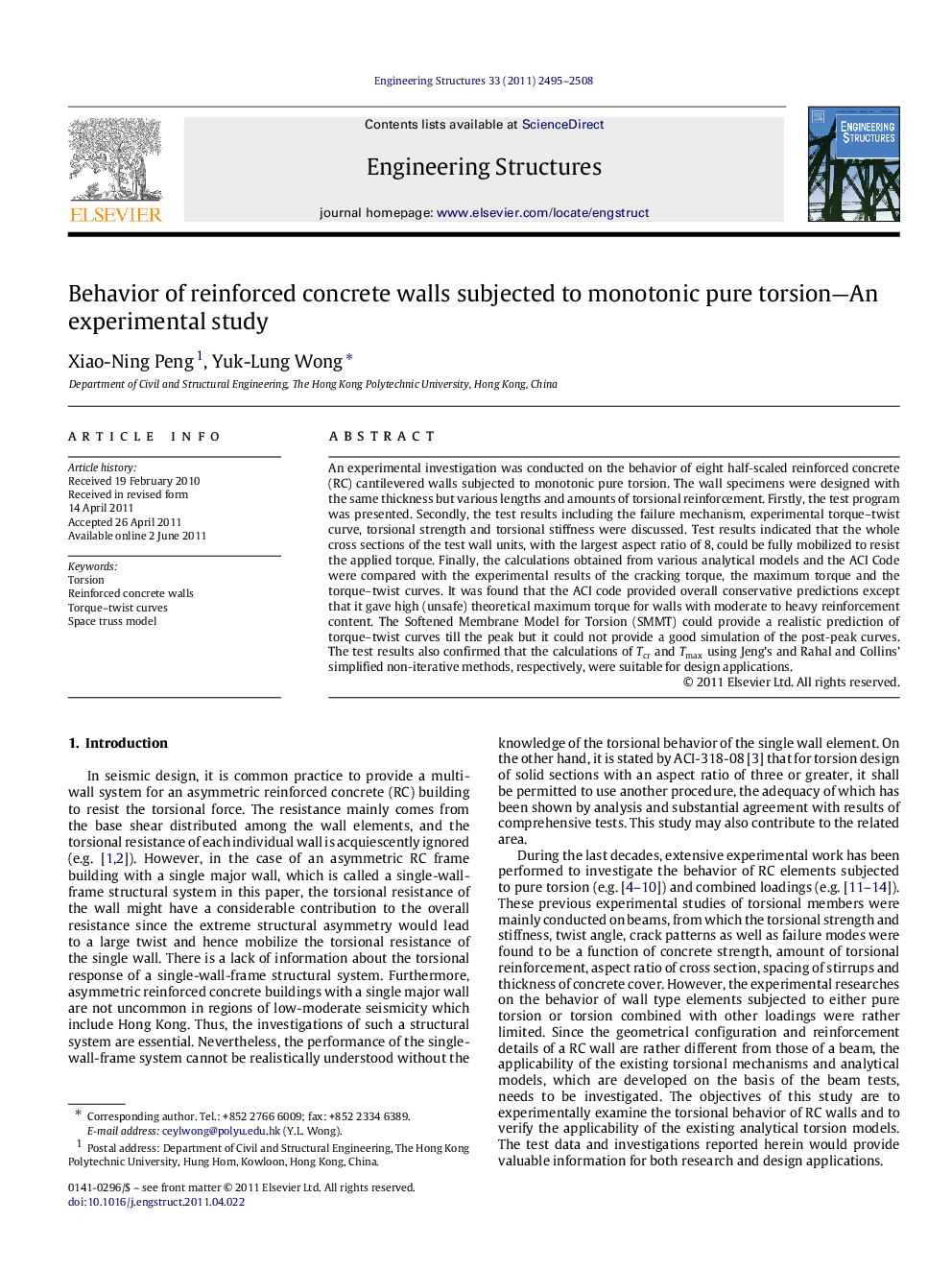| Article ID | Journal | Published Year | Pages | File Type |
|---|---|---|---|---|
| 267683 | Engineering Structures | 2011 | 14 Pages |
An experimental investigation was conducted on the behavior of eight half-scaled reinforced concrete (RC) cantilevered walls subjected to monotonic pure torsion. The wall specimens were designed with the same thickness but various lengths and amounts of torsional reinforcement. Firstly, the test program was presented. Secondly, the test results including the failure mechanism, experimental torque–twist curve, torsional strength and torsional stiffness were discussed. Test results indicated that the whole cross sections of the test wall units, with the largest aspect ratio of 8, could be fully mobilized to resist the applied torque. Finally, the calculations obtained from various analytical models and the ACI Code were compared with the experimental results of the cracking torque, the maximum torque and the torque–twist curves. It was found that the ACI code provided overall conservative predictions except that it gave high (unsafe) theoretical maximum torque for walls with moderate to heavy reinforcement content. The Softened Membrane Model for Torsion (SMMT) could provide a realistic prediction of torque–twist curves till the peak but it could not provide a good simulation of the post-peak curves. The test results also confirmed that the calculations of Tcr and Tmax using Jeng’s and Rahal and Collins’ simplified non-iterative methods, respectively, were suitable for design applications.
► An experimental study was conducted on the torsional behavior of RC walls. ► Failure mechanism, experimental curve, strength and stiffness were discussed. ► ACI provisions provided overall conservative predictions. ► SMMT well predicted the torque–twist curves till the peak. ► Jeng’s and Rahal and Collins’ simplified methods were suitable for design.
